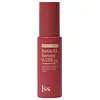What's inside
What's inside
 Key Ingredients
Key Ingredients

 Benefits
Benefits

 Concerns
Concerns

 Ingredients Side-by-side
Ingredients Side-by-side

Water
Skin ConditioningGlycerin
HumectantTriethylhexanoin
MaskingLactobacillus/Collagen/Mesembryanthemum Crystallinum Leaf Extract Ferment Lysate
Skin ConditioningCaprylic/Capric Triglyceride
MaskingPropylene Glycol
HumectantPolysorbate 80
EmulsifyingCentella Asiatica Leaf Extract
Skin ConditioningCetyl Alcohol
EmollientGlyceryl Stearate
EmollientPhenoxyethanol
PreservativeRetinal
Skin ConditioningPEG-7 Glyceryl Cocoate
EmulsifyingCeramide NP
Skin ConditioningSodium Hyaluronate
HumectantCrithmum Maritimum Extract
Skin ConditioningTromethamine
BufferingPolyglutamic Acid
Skin ConditioningHydrolyzed Hyaluronic Acid
HumectantHydroxypropyltrimonium Hyaluronate
Butylene Glycol
HumectantSucrose Laurate
Emollient1,2-Hexanediol
Skin ConditioningHydroxyacetophenone
AntioxidantInulin Lauryl Carbamate
Emulsion StabilisingSodium Acetylated Hyaluronate
HumectantPEG-75 Stearate
Water, Glycerin, Triethylhexanoin, Lactobacillus/Collagen/Mesembryanthemum Crystallinum Leaf Extract Ferment Lysate, Caprylic/Capric Triglyceride, Propylene Glycol, Polysorbate 80, Centella Asiatica Leaf Extract, Cetyl Alcohol, Glyceryl Stearate, Phenoxyethanol, Retinal, PEG-7 Glyceryl Cocoate, Ceramide NP, Sodium Hyaluronate, Crithmum Maritimum Extract, Tromethamine, Polyglutamic Acid, Hydrolyzed Hyaluronic Acid, Hydroxypropyltrimonium Hyaluronate, Butylene Glycol, Sucrose Laurate, 1,2-Hexanediol, Hydroxyacetophenone, Inulin Lauryl Carbamate, Sodium Acetylated Hyaluronate, PEG-75 Stearate
Water
Skin ConditioningPropylene Glycol
HumectantGlycerin
HumectantPhenoxyethanol
PreservativeCarbomer
Emulsion StabilisingPEG-40 Hydrogenated Castor Oil
EmulsifyingCaprylic/Capric Triglyceride
MaskingCamellia Sinensis Leaf Extract
AntimicrobialMethyl Methacrylate Crosspolymer
Polyglutamic Acid
Skin ConditioningTetrasodium EDTA
Retinol
Skin ConditioningHydrogenated Lecithin
EmulsifyingEthylhexylglycerin
Skin ConditioningCholesterol
EmollientBiosaccharide Gum-1
HumectantTocopheryl Acetate
AntioxidantRubus Idaeus Fruit Extract
AstringentBHT
AntioxidantPunica Granatum Extract
AstringentButylene Glycol
HumectantPhaseolus Radiatus Seed Extract
Skin ConditioningBHA
AntioxidantAvena Sativa Meal Extract
SoothingPalmitoyl Hexapeptide-12
Skin ConditioningWater, Propylene Glycol, Glycerin, Phenoxyethanol, Carbomer, PEG-40 Hydrogenated Castor Oil, Caprylic/Capric Triglyceride, Camellia Sinensis Leaf Extract, Methyl Methacrylate Crosspolymer, Polyglutamic Acid, Tetrasodium EDTA, Retinol, Hydrogenated Lecithin, Ethylhexylglycerin, Cholesterol, Biosaccharide Gum-1, Tocopheryl Acetate, Rubus Idaeus Fruit Extract, BHT, Punica Granatum Extract, Butylene Glycol, Phaseolus Radiatus Seed Extract, BHA, Avena Sativa Meal Extract, Palmitoyl Hexapeptide-12
 Reviews
Reviews

Ingredients Explained
These ingredients are found in both products.
Ingredients higher up in an ingredient list are typically present in a larger amount.
Butylene Glycol (or BG) is used within cosmetic products for a few different reasons:
Overall, Butylene Glycol is a safe and well-rounded ingredient that works well with other ingredients.
Though this ingredient works well with most skin types, some people with sensitive skin may experience a reaction such as allergic rashes, closed comedones, or itchiness.
Learn more about Butylene GlycolThis ingredient is an emollient, solvent, and texture enhancer. It is considered a skin-softener by helping the skin prevent moisture loss.
It helps thicken a product's formula and makes it easier to spread by dissolving clumping compounds.
Caprylic Triglyceride is made by combining glycerin with coconut oil, forming a clear liquid.
While there is an assumption Caprylic Triglyceride can clog pores due to it being derived from coconut oil, there is no research supporting this.
Learn more about Caprylic/Capric TriglycerideGlycerin is already naturally found in your skin. It helps moisturize and protect your skin.
A study from 2016 found glycerin to be more effective as a humectant than AHAs and hyaluronic acid.
As a humectant, it helps the skin stay hydrated by pulling moisture to your skin. The low molecular weight of glycerin allows it to pull moisture into the deeper layers of your skin.
Hydrated skin improves your skin barrier; Your skin barrier helps protect against irritants and bacteria.
Glycerin has also been found to have antimicrobial and antiviral properties. Due to these properties, glycerin is often used in wound and burn treatments.
In cosmetics, glycerin is usually derived from plants such as soybean or palm. However, it can also be sourced from animals, such as tallow or animal fat.
This ingredient is organic, colorless, odorless, and non-toxic.
Glycerin is the name for this ingredient in American English. British English uses Glycerol/Glycerine.
Learn more about GlycerinPhenoxyethanol is a preservative that has germicide, antimicrobial, and aromatic properties. Studies show that phenoxyethanol can prevent microbial growth. By itself, it has a scent that is similar to that of a rose.
It's often used in formulations along with Caprylyl Glycol to preserve the shelf life of products.
Polyglutamic Acid is made up many glutamic acids chained together. It is created from bacterial fermentation.
This ingredient is an effective skin hydrator and may help speed up wound healing. As a humectant, it draws and holds water to the skin. This ingredient is often compared to hyaluronic acid or glycerin. Similarly to hyaluronic acid, it can vary in molecular weights. This means polyglutamic acid is capable of bringing hydration to lower levels of the skin.
Fun fact: Polyglutamic Acid is found in the Japanese food, natto. It is also being used in cancer treatment studies.
Learn more about Polyglutamic AcidPropylene Glycol is an odorless, colorless liquid. As a humectant, it helps skin retain moisture. It also aids in delivering active ingredients.
Another role of this ingredient is preventing a product from melting or freezing. Propylene glycol also adds antimicrobrial properties to a product, elongating product lifespan.
This ingredient is considered an organic alcohol and commonly added into both cosmetics and foods.
Those with sensitive skin or conditions may develop a rash when using this ingredient.
Learn more about Propylene GlycolWater. It's the most common cosmetic ingredient of all. You'll usually see it at the top of ingredient lists, meaning that it makes up the largest part of the product.
So why is it so popular? Water most often acts as a solvent - this means that it helps dissolve other ingredients into the formulation.
You'll also recognize water as that liquid we all need to stay alive. If you see this, drink a glass of water. Stay hydrated!
Learn more about Water